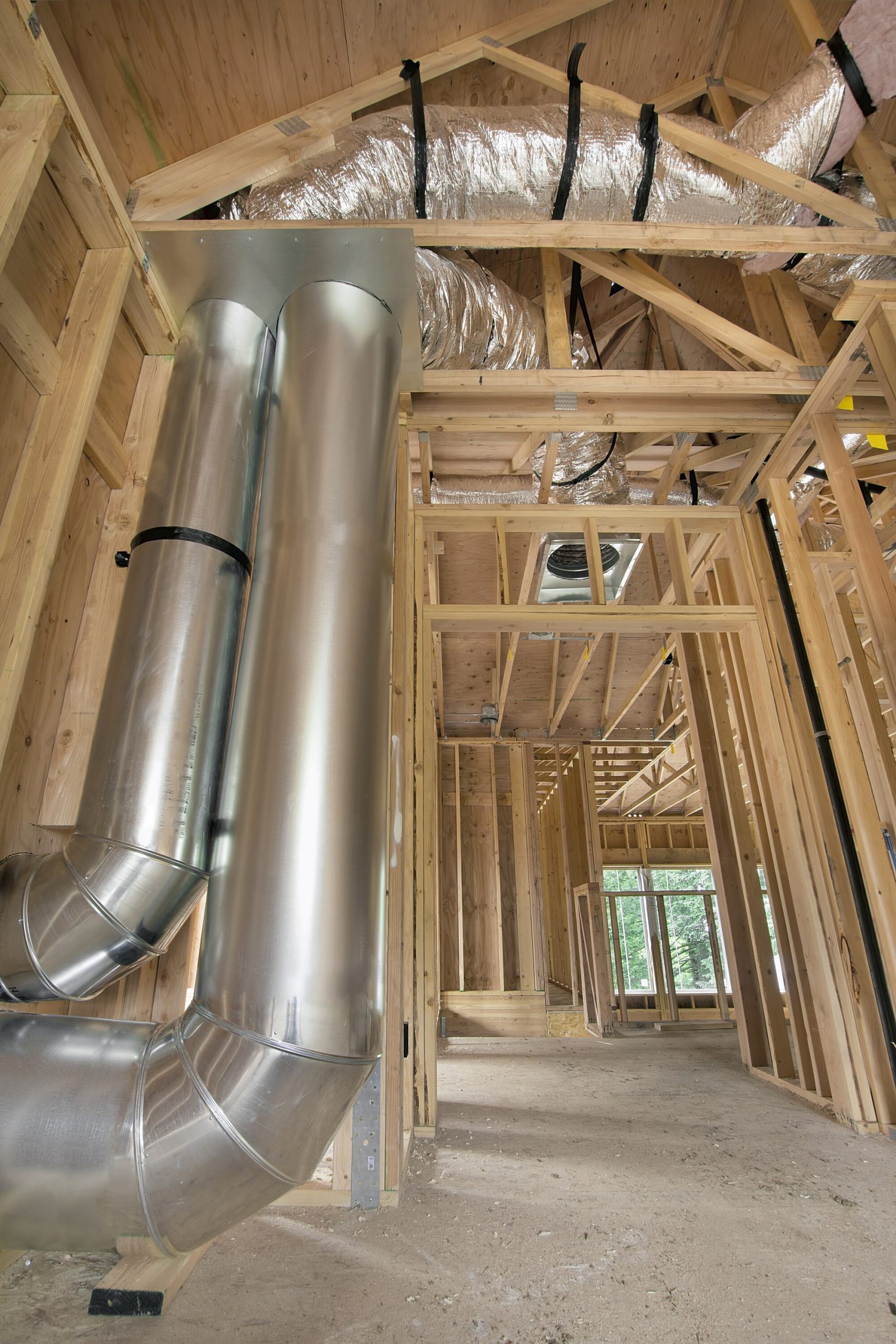5 Reasons Why Your HVAC Unit is Loud Do you find your HVAC unit excessively…

When Good Ductwork Goes Bad
You probably don’t think about your home’s ductwork very much. In fact, many homeowners don’t realize that the ductwork is an extremely important and active part of their home’s HVAC system. The design, installation, and maintenance of ductwork has a significant effect on how comfortable and efficient your home will be.
The maintenance part is what we’re going to talk about today. Without proper attention and maintenance, even well-designed and installed ductwork can “go bad” over time. Let’s take a look at some of the common causes of ductwork damage and failure, as well as how to keep your home’s ductwork from going over to the dark side.
Invasion of the Creepy Critters
Animal pests like rodents and insects are a common cause of ductwork damage, especially in crawlspaces and attics. For instance, chipmunks may chew their way into a duct seeking a warm place to nest in the winter. Nesting materials can cause blockages in the ducts, while holes let your conditioned air seep out and go to waste.
Animal waste inside the ducts can pollute your home’s air. And heaven forbid one of those visiting rodents meets its unfortunate demise inside your ductwork, because that smell is going to permeate your entire house.
In order to prevent a critter invasion, you should make sure that your home’s attic and crawlspace stay free of pests. Make sure all outdoor vents are screened with mesh and check it regularly for damage. If you see or smell evidence of critters, evict those invaders (with the help of a pest control company if necessary) and make necessary repairs to keep them from coming back.
If you see, hear, or smell any evidence of animals in your ducts, have the ducts checked and repaired by a trained technician. This will help keep your system running efficiently and effectively, and your home’s air clean.
SEE ALSO: TAKING CARE OF YOUR HOME’S CRAWL SPACE
SEE ALSO: WHY DOES MY AC SMELL LIKE…..
Taking the Hit
Heavy or repeated impacts are another common cause of ductwork damage. Ducts located in attics and garages are particularly susceptible to being bumped, hit, or crushed.
Watch out for ductwork when you’re shoving those boxes of Christmas decorations into the attic, and never, ever store anything on top of the ducts. Even something that seems “light enough” could slowly crush the ductwork over time.
Impact damage can cause dents that impede airflow, or even crush the duct, stopping air flow completely. Additionally, impacts can create holes or cause duct joints to pull apart, allowing conditioned air to escape—or if it’s a return duct, it could lead to unconditioned, unfiltered air being drawn into your home’s system, which isn’t good for your HVAC equipment or your home’s indoor air quality.
Having your ductwork regularly inspected by a trained technician can help to spot any impact damage that has already happened. If you see any evidence of dented ducts or joints pulling apart, call for service right away.
Fungus Isn’t Fun, Gus
Mold is another culprit that can make good ductwork go very, very bad. Old fiberboard ductwork is particularly susceptible to mold growth, but mold can sometimes be found in other types of ductwork too.
When mold gets going inside of a home’s ductwork, it can spread fast. Not only does the mold eat away at the duct itself, the mold spores also get into the air passing through those ducts. This can lead to allergy and asthma symptoms for the home’s residents. Plus, those spores can go on to form colonies inside of the house, and now you’ve got a major remediation job on your hands.
Having your ducts regularly inspected and cleaned or replaced as necessary can keep mold from invading your home and your airways. Inspecting and cleaning the coils in your HVAC unit can also help to prevent mold growth inside the unit as well as the ducts. That will help your HVAC itself to run more efficiently too.
SEE ALSO: RESTORING YOUR HVAC AFTER FLOODING
The Old Wear and Tear
Finally, even well-maintained ductwork can’t last forever. The average lifespan for air ducts is about 20 to 25 years.
There are several forces at work that cause ducts to eventually wear out. First, ducts are constantly being heated or cooled. Those temperature changes cause the duct to expand and contract. With each expansion and contraction, the material gets just a tiny bit weaker. Just as a heat exchanger will eventually crack after enough years of service, so will ductwork.
Next, ductwork is also subjected to a great deal of vibration. When air blows through the ducts, they shake and vibrate—and they vibrate even more if they’re not quite big enough for the amount of air passing through them. That vibration can cause the joints to pull apart, and it can cause ducts to come loose from where they’ve been secured.
Rust is another danger for metal ductwork. When cold air passes through the ducts, condensation can form on the outside of them. After enough years, that condensation can lead to rust that eats through the ductwork.
SEE ALSO: HOW IMPORTANT IS REGULAR MAINTENANCE
Conclusion
Proper installation and maintenance can help to ensure that your home’s ductwork reaches its full expected lifespan without “going bad.” And that’s important because the air ducts are an integral part of the HVAC system. To maximize your home’s comfort and efficiency, take good care of your ducts—and they’ll take care of you!


